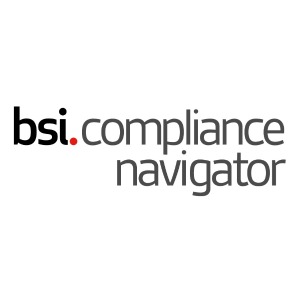BSI Compliance Navigator Bi-weekly Blog: Transitioning from IVDD to IVDR

Transitioning from IVDD to IVDR
The transition period for the IVDR has now begun. The initial time line for date of application, on 26 May 2022 (after which, no new IVDD certificates can be issued), has been partially extended to allow manufacturers to continue to sell “legacy” devices already placed on the EU market for up to an additional 5 years, depending on the risk class, as long as no significant changes are made to the device design or intended purpose. Any new devices placed on the market will need to conform to the revised rules of the IVDR. However, all devices, including legacy devices, must immediately conform to post-market surveillance, vigilance, registration of economic operators and of devices from the original date of application (i.e. 26 May 2022).
It is also important to note that the Mutual Recognition Agreements between the EU and Switzerland and the UK have been impacted. The QMS will need to be updated to reflect these changes as well, including, but not limited to, references to the appropriate regulations (e.g. in Switzerland the Ordinance on In Vitro Diagnostic Medical Devices or IvDO) and the UK Conformity Assessment mark, appropriate Authorized Representatives, and other related changes.
Manufactures who already have a QMS in place have to make a decision on how to handle this extended transition. During the next few years, they will need to begin to submit new products under the new regulation and therefore under a fully updated QMS, taking into account all of the requirements discussed above. At the same time, they will need to determine whether the updates to the QMS will apply to all existing products or only to those registered under the new IVDR. While some clauses, such as communication plans or updated responsibilities, can take effect immediately, other parts ofthe QMS could need to be applied in a product by product approach, such as UDI changes, while others, such as those for post-market surveillance, must take effect immediately for all products. There are different options to consider when taking this into account.
One option is to see this as an opportunity to create a new, parallel QMS that is optimized for the new IVDR with a defined progression from the old to the new system. This parallel QMS system has the advantage of allowing each file to refer to the appropriate procedures, as well as making very clear that the new system is in place. For organizations with a long history, and a complicated QMS, this could be the opportunity to dramatically simplify the structure of the QMS, ensuring a higher efficiency, rather than adding on to existing layers. However, it does involve significant overhead and management to create and later abolish the old procedures. It may also create confusion for employees faced with two sets of processes.
Another option is to update existing QMS documents to meet new requirements. This would likely be the preferred option for organizations who do not have a tremendous gap between their existing QMS and the new requirements found in the IVDR. The disadvantage of this approach is having parts of the QMS in effect that cannot be applied to all products at the same time and, in some cases, several options within a procedure to clarify devices that are pre- or post-transition.
With either approach, a transition needs to be documented to determine what is applicable, at what moment, and to which products. This progression can be defined within the procedures themselves, for example as part of the scope indicating that the procedure or record only applies to products registered under the IVDR, or it can be defined in a separate project plan which clarifies which procedures are immediately applicable and which become applicable only upon product registration.
Whichever approach is used, it is critical that everyone using the procedures understands how and when to apply new aspects of the QMS. Training to the new requirements will be imperative. Finally, it is important to remember that this change to the QMS is likely to be considered “substantial” and should be clearly communicated with the notified body as well as following the established Change Control process.
This blog post is an excerpt from our updated whitepaper: Developing and maintaining a quality management system for IVDs. Please download the full whitepaper to find out more information.
The Compliance Navigator blog is issued for information only. It does not constitute an official or agreed position of BSI Standards Ltd or of the BSI Notified Body. The views expressed are entirely those of the authors.
Follow our blog for free to get the latest update in the Medical Devices Market.
Read our latest blog posts here.





















